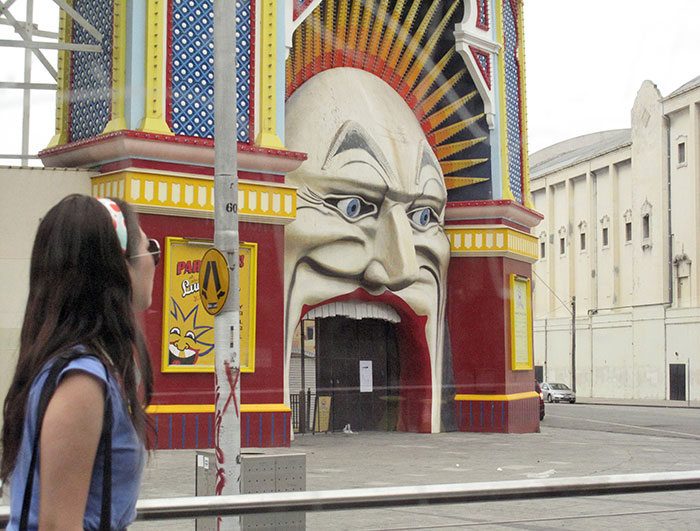
The Last Apollo Mission
by Douglas Lain

On the Moon
Sitting at a folding card table inside the Apollo 11 space capsule, I take sips of cold coffee from a Starbucks coffee cup and shuffle through my screenplay. I’m trying to find the right scene and find my lines, but I can’t focus. I’m shivering in a phony capsule made of plywood and fiberglass. The khaki shorts and sleeveless green silk blouse I’m wearing are inappropriate for the climate and temperatures on the moon, but Donnie is using the Lost in Space replica spacesuit to explore the surface, and so I have to make do, huddling on a metal folding chair with my knees under my chin, while my boyfriend pretends to be an astronaut.
Watching him play golf out there, noting the way the Saran Wrap window pane distorts his image, I can’t maintain my resentment. Yes, he’s snug and warm in the spacesuit, but watching him through the porthole, seeing how the light is bent as it passes through the plastic wrap, I realize how unstable this moment is. The capsule itself is flimsy. There is almost nothing separating me from the vacuum of space.
How long were the original astronauts on the moon? How many lunar rocks did they collect, how many color photographs? How long will I be stuck here before we launch again? I should know this. I did my research when I wrote the script, but now that I’m here, the details aren’t there for me. I just never expected to be involved in acting any of this out.
Pacing helps keep me warm, but I’m leaving footprints inside the ship. The grey and white sand that Stanley had shipped from England is underfoot inside the capsule. Another symptom of how hurried the mission has been. Everything is unfinished. There is no floor. This Apollo capsule was built for exterior shots. I’m not in a real space at all, but in a space that doesn’t exist. I am in the part of the rocket that will never appear onscreen.
I kick the sand. I collect grains in the toe of my open sandal, launch the clump into the air, and then immediately regret this action when the cloud of sand expands inside the capsule. With less gravity the finer grains drift, and I start to cough. I stumble back and knock against the plywood exterior wall of the capsule, and for a moment it seems the craft will break apart, but then I find my bearings and everything holds.
I press my face up against the plastic film on the porthole and discover that, in this way, I can breathe without taking in dust. There is clean air at the edge, along the outer wall of the craft.
Looking out, I see Donnie carrying the American flag. He is jumping several feet into the air with each step, and the light from the Earth is reflecting off his glass helmet.
We are on the moon.
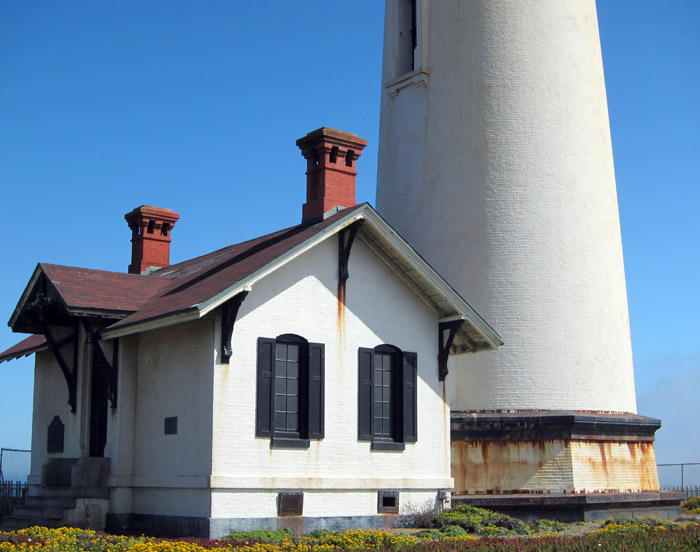
Kubrick
I met Stanley Kubrick in the summer of 2001, right around the time I realized my writing career was over. It had taken me seven years to realize it, but the truth was that my career had ended before it had ever begun.
I should have never left the New School with just a Master’s degree. If I’d stuck with the program, I could’ve been tenure track in some third -tier school somewhere in the Midwest. My friends did just that. Nicole Baker teaches creative writing and composition to depressive undergraduate girls and alcoholic, obese boys at the University of Texas, and Larry Moore is teaching at the University of Alberta, of all places, but I’d been overconfident. I’d convinced myself that I could make good as a commercial writer. After all, my first published story was selected for Houghton Mifflin Harcourt’s Best American Short Stories of 1995, and after that I figured an ordinary life as a college professor was beneath me. I stayed in New York, took a job at a used bookstore to make ends meet, and stayed up nights to write my first novel. Seven years later, I was still looking for a publisher and could no longer convince myself that the job behind the cash register at Church Street Books was temporary.
The moment before Kubrick strolled in to look at coffee table books and then offer me a job, I’d been in the back alley on a break. I’d finally caught up to my agent and was practicing my outdoor voice with her, holding the earpiece side of my cell phone in my fist and shouting into the microphone end.
“I’m still young,” I’d shouted. “My ovaries still work, you Pepsodent zombie. You think it’s over for me? It’s not over.”
The alley ran between the bookstore and the kitchen of an Indian restaurant with tiny windows painted purple and gold, and I could still smell fermenting curry when I stepped back behind the register.
Stanly Kubrick looked like any other celebrity, in so much as he drew the eye. His outfit, a tailored blue suit covered by a clean blue overcoat, was subtly color-coordinated without being cute, and while he wasn’t handsome, there was something about the way he looked at me over the tops of his glasses, the way he stroked his scraggly grey beard and ran his palm over his balding head, that was charismatic. Attention flowed in his direction.
He stood in the second aisle, took a heavy hardback copy of “The Aviators of World War Two” off the shelf, and then put the tome back.
I approached him as casually as I could, said his name while his back was to me. He thumbed through chess books.
“Mr. Kubrick?”
He turned around and smiled at me. “Paula Austin?” he asked.
I froze at the sound of my name, at the way my name sounded when spoken by the director.
“Yes?” I said.
“I’m a big fan of your work,” he said.
We were each of us speaking the others’ lines. I took a breath and tried again, but the wrong words kept coming out of Stanley’s mouth.
“What was that?” I asked.
“A very big fan of your writing.”
“Ah…Thank You.”
He’d read the story in the Best of 1995, the story entitled ‘A Broken Assemblage,’ and was much impressed.
“You were?”
“Very much impressed, yes. May I buy you lunch?”
“I’m not off work until seven.”
“I want to hire you to write for me.”
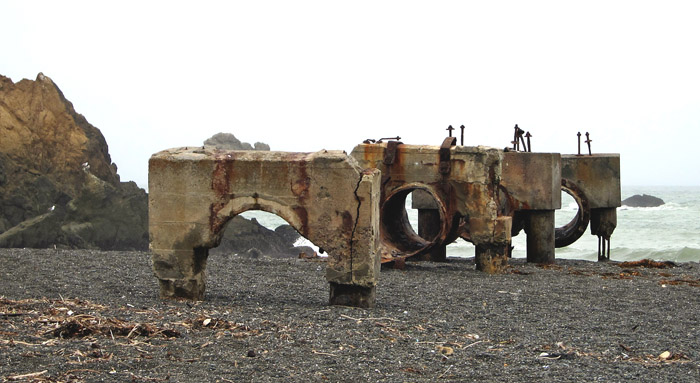
The Twin Towers
I looked up at the phallic monsters on the superblock, and at the expansive empty space between the towers. Kubrick paused for a moment by the glass and concrete arches and pointed at the bronze sphere in the fountain.
“Why is it that every public sculpture is supposed to represent world peace?” Kubrick asked.
“Does it?”
“Smooth and featureless, right?” Kubrick asked.
I crossed my arms and bit my lip. It was windy between the buildings and water from the fountain was caught by periodic gusts. Water droplets soaked through my thin blouse, and I wished I’d worn a sweater.
“It’s a ball,” I said.
“Yes?”
“Not a symbol for capitalism.”
“You’re saying that capitalism isn’t a ball?”
Kubrick had keys for everything. He opened the huge double doors to the South Tower, pressed a button for the elevator, and then used another key inside the box. He turned the key and pressed the button for the basement, and took me down to the lunar surface.
The moon was underneath the World Trade Center. A man in a white oxford-cloth shirt, khaki pants, and a navy blue tie had a large compass in his right hand and a photograph of the moon in his left. He measured the surface of the giant globe, the model of the moon that filled the high-ceilinged room, and then compared the measurement with what was in the photo. I watched this from inside the elevator, stupefied by the dim spectacle of empty space and the giant globe, and then stepped forward onto the set.
Kubrick was gone. He’d been right beside me in the elevator, but when doors closed behind me, I looked around to find that the director had disappeared and, instead of Kubrick waiting for me by the moon, there were movie stars.
Nicholas Cage was wearing a white coat, holding a pocket calculator, and talking to the man who was measuring the moon. The actor had his sly smile going, the smile that always made me wonder how anyone so creepy looking could have ever made a career in Hollywood, while the girl with him was doing her best to come across as something more substantial than a seventeen-year-old with a media coach and a personal stylist. The three of them didn’t really fit together, but it wasn’t up to me to understand. I was just the writer
“Nicholas Cage?” I asked.
“That’s right. And who do I have the pleasure of meeting?”
“Paula Austin.”
“Oh. Yes,” Cage said. “The writer. “
The man with the compass and photographs explained that a dust storm would be nearly impossible to replicate at the scale Kubrick was asking for.
“We could do it in camera,” the scientist said. “Or, if Stanley will let me, I could produce the effect digitally.”
“I don’t think Mr. Kubrick is going to allow CGI effects to pollute the project,” Nicholas said. “Do you?” he asked the girl.
“No. He wouldn’t want to pollute the project with CGI.”
““You’re going to star in the movie?” I asked.
“Me?” Cage asked. “No. I’m too well known.”
“We’re not acting in the movie. We’re acting on the set,” the girl said.
“Oh.”
“You don’t recognize her?” Cage asked. I shrugged. “Scarlett here was in the Horse Whisperer.”
“Evans’s book?”
“Redford’s movie,” Johanssen said.
“Right.”
“And now you’re acting on Kubrick’s set, but not in his movie?”
Scarlett smiled nervously at me and, for a instant, I thought I recognized her, but then realized that I was thinking of Molly Ringwald.
“Stanley is very detail oriented,” Cage said. He pointed at the tracks that encircled the moon model, and then leaned in close to me and put his arm around my shoulder in a way that was a bit menacing.
“Look in the gaps,” Cage said. He was too close, but his breath was very fresh. He smelled like organic mint and warm tea, maybe a bit like antiseptic soap. “Look,” he repeated.
There were boxes, wooden boxes with glass fronts, in the spaces between the ties. These were Joseph Cornell’s “Assemblages,” and while at first I wasn’t sure if they were authentic or not, eventually I came to believe in them.
The first box was entitled Solar Set contained five tiny shot glasses, and each shot glass was held in place by tiny nails around the foot. Each glass contained a marble. There were two red marbles, two blue marbles, and one green. The next box contained an illustration of the moon taken from a 19th century astronomy book. A yellow cork ball that ran along a wire track at the top was meant to represent the sun, and thereby the movement of time. I’d seen the box before at the Met, and I could still remember bits about the work that I’d picked up from the audio guide.
The next box contained a photograph of Lauren Bacall, the next one a clay pipe for making soap bubbles, and the next contained a paper cut-out of a green and red feathered parrot.
Looking at each assemblage as I moved in orbit around the moon I came to feel very strange. If these weren’t the original works, if they were not the actual dream boxes made by the American Dadaist Joseph Cornell, then they were forgeries that made the distinction between copy and original irrelevant. What mattered was encountering life as something that could be preserved behind glass. Stuffed birds, blue and red glass marbles, feathers and clothespins, all were made into something more than what they were on their own, into something somehow more than real.
I moved to the dark side of the moon, where there was only a green light from the emergency exit sign. I struggled to discern what the assemblages on the dark side contained. I stared and stared, opening my eyes wide in the dark, until finally I picked up the box with shot glasses and marbles again. I stood up straight and looked around and realized that Scarlett Johansen and Nicholas Cage were gone. The movie stars had left and the entirety of the moon was dark.
Kubrick still wasn’t anywhere to be seen, and the scientists in khaki pants and white dress shirts were gone. And I called out into the darkness a few times. I called out for help until I came to accept that I was alone.
I decided to find the elevator again. I crawled in the dark, heading in as straight a line as I could manage as I fumbled over wooden tracks and thick electrical cords.
I held onto what I thought was carpet until I saw the soft glow of the button for the elevator. There was only one button with an arrow that pointed up, and when I was inside it the only light came from the buttons for the floors. I reached out for a light switch and accidentally pressed the button for floor 76.
The elevator ascended and the overhead light slowly turned on. Dim at first, but then brighter and brighter as I made my way up.

Digital Transitions
My boyfriend Donnie told me that I ought to include a dog in the story. If Americans were going to go back into space, if there was going to be a return to the idealism of the ‘50s and ‘60s, a return to the stars, then I had to bring Fido along for the ride. Any idealistic public project that was going to take hold of the public’s imagination in this new millennium would have to be cute.
“People want to believe in innocence, and that means animals. Puppy dogs, guinea pigs, maybe a talking insect? You need their unreserved sympathy,” Donnie said. There was no reason to worry about the implications. It was a job, and that was all. He took a gulp of beer from a green bottle and then set the bottle down on the remote control accidentally.
On the television set, Jim Carrey made a face at the audience. His body seemed to be made out of rubber and he took his left leg and raised it over his head so that he appeared to be carrying himself on his own shoulder.
Donnie worked in animation as a freelance digital editor. He’d worked for Fox Animation, Warner Bros, Dream Works, and with Lucasfilm on a project called Monkey Island although he didn’t like to talk about that one. Actually he rarely talked about any of his films. Once we watched Shrek together and he couldn’t point out anything he’d done. He’d try to tell me, but his work went by too quickly or subtly. I could never see it.
“I edit so that don’t notice cuts and jumps,” he said. “If you really want to miss out on my best work, then look at Anastasia. That film has perfect transitions,” Donnie told me. “Whatever problems there are in that film have nothing to do with what I did. What I did was invisible. The movie is seamless.”
We were drunk in our studio apartment. Actually, Donnie was drunk, and I was working on catching up. I poured vodka and lemonade into an oversized red plastic cup and thought about all the smooth cuts, the little invisible spaces, in Anastasia.
Maybe Donnie was right. I needed a dog in the story, and not just any dog, but that dog the Russians had sent into space to die. I needed the Sputnik dog, and by Googling I found her name was Laika.
We would have never landed on the moon if it hadn’t been for Laika. Without the Russian’s beating us, without the threat of communism, we would have never have gone. After all, there were no material reasons to go up. It wasn’t as though we were expecting to find oil up on the moon, or diamonds or anything. There was nothing up there worth having, but still we had to get there first.
So yes, I needed a dog like Laika. After all people would want to see an American version of Laika on the moon. I needed something tangible to motivate the audience and the characters.
“Richard Nixon,” Donnie said.
“What?”
“Richard Nixon was president when they went to the moon,” he said.
I went to get ice from our stainless steel refrigerator. Donnie didn’t make consistent money; I was the one who paid the rent for our tiny little apartment, but when Donnie did make money, he’d usually make a substantial pile of it. We had a European refrigerator with a transparent Plexiglass front panel and a cold, clean, stainless steel freezer door. We had to keep the inside of the refrigerator clean because everything inside was always on display, but I enjoyed the discipline of that. I’d arrange the apples in a glass bowl and place them on a lower shelf. When I shopped I purchased items based on the color of the packaging, and ended up with a lot of greens and oranges. Perrier bottles and liters of orange soda are very pretty, I think.
The appliance seemed to match with the concrete walls in our unit. It was very clean, and it produced ribbons instead of cubes. Ice ribbons that came out of our Bosch freezer. They were curved like peppermint holiday candies. These ribbons wouldn’t fit in a glass unless you snapped them into pieces, but the uniqueness of our ice made me feel like I’d arrived at something. I’d open the stainless steel door of the freezer, take an ice ribbon out of the metal bin, and feel as though I’d proven that art and everyday life could combine.
I returned to our bedroom and watched Jim Carrey dance with Lauren Hutton. She kept trying to bite Carrey, but he was too rubbery and agile for her. I put the ribbon of ice in my mouth so that it held my mouth open and then turned to Donnie to show him how ridiculous I looked, but Donnie’s eyes were closed.
Maybe this Moon Mission could include the daughter of Christa McAuliffe? The story could be about how little Carly McAuliffe, now all grown up, was going to go to the moon in order to honor her mother’s memory. Instead of the big ideological space race, this Last Apollo Mission would be a kind of coming of age story. It would be the story of reconciliation between a beautiful young astronaut and her dead school-teacher mom. The side plot would be the story of a young jetfighter struggling with alcoholism. He’d dry out when offered the chance to go back up there and make something out of his life.
The ice in my mouth slowly melted as I watched Jim Carey close the lid to his own coffin. He had a stupid smile on his face and then he was trapped inside the box.
In 1969, the men who came back from the moon had used solar wind to power their craft, and they’d used a thin strip of aluminum as a solar sail. From the moon, they’d used lasers to measure the distance from the moon to Earth to within a fraction-of-an-inch accuracy, and they’d drilled an eight-foot soil sample. What kinds of practical projects could the new astronauts accomplish? Maybe they’d put a webcam on the American flag, or maybe they could build a sauna?
The ice in my mouth slipped from between by lips and to the orange carpet. I swallowed the rest of my vodka lemonade in one go and then climbed onto the couch next to Donnie. His eyes were closed, but when I cuddled up with him, he put his hands on my breasts and pressed against me. He put his tongue in my ear.
Richard Nixon had seemed happy for the astronauts when they got back. All the photographs show Nixon laughing, but maybe George Bush would be visibly disappointed when the astronauts make it back alive? He’d resent them for their success, and then finally admit that he’d wanted to go with them. They’d tell him that, while he might be president, he was no astronaut. And they’d tell him that nobody wanted to be stuck with him in the capsule. Not even the Republican astronauts wanted George Bush to come along for a ride in a cramped space capsule. Nobody wanted George Bush on the moon.
I took off my sweater and fetched the rust colored knitted blanket off the back of the couch, while Donnie put his hands between my legs. He made it seem very natural so that I hardly noticed him doing it. He really was masterful with transitions.
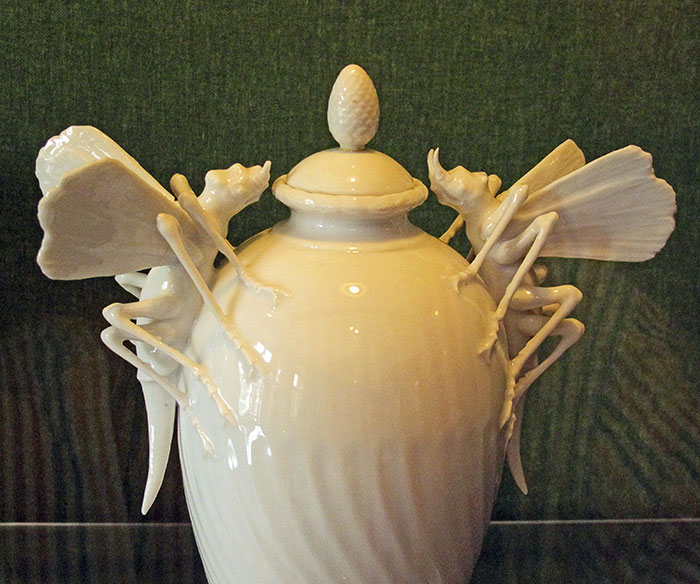
Stripping Like Barbarella
Donnie wants me to strip in the same way that Jane Fonda stripped during the opening credits for the film Barbarella. In the film sequence, Fonda floats weightless in her space capsule and removes her spacesuit. First she undoes the silver glove and then she removes the sleeve. She removes one leg of the suit and then the other. Her toes are pointed and her knees are bent. Her thighs appears to be perfect, her skin soft and smooth.
Perhaps the most erotic moment occurs when the tint in the glass of her bubble helmet dissipates. It looks as though the helmet is draining; all the bad black fluid disappears, and Fonda’s oval face, her wide eyes and phony smile, are visible behind the glass.
We’ve been trapped on the moon for weeks, and I’ve made my desire clear to him, but he needs this stripping if he’s going to perform the act. Donnie wants me to strip like Jane Fonda.
“We’re stuck here, yeah? So we might as well live out the fantasy of it,” he says.
“Your fantasy.”
“Of course, yeah.”
“What about my fantasy?”
This strikes Donnie as a welcome diversion. If I have a moon fantasy that he can fulfill, then we’ll do mine first, he says, but afterwards I’ll still have to strip like Jane Fonda.
“Well?”
“Well, what?”
I try to think of what it is that I want from him. I sit by the porthole, look out at the model of the moon outside, out beyond the Saran Wrap pane. I glance at the matte painting of an earthrise, and then close my eyes and try to fantasize, but the fantasies that occur to me like that, out there in space, don’t appear to me as my own. I picture Donnie dressed in his spacesuit or as a hardhat worker and realize that the image is, if anything, homoerotic, but that works for me. I imagine climbing on top of him in a crater, or covering our bodies with moon dust and kneading his flesh like dough, but it doesn’t take long before this image twists into something grotesque. My head fills with cartoon images. I picture Tom and Jerry doing 69 while floating in empty space. I picture Minnie Mouse tying up Mickey with her bow.
“I can’t think of anything,” I tell him.
Soon enough, I’m naked except for the space suit. I start by removing the thick rubber gloves for him. I unhitch the sleeve from the shoulder and slip my arm free.
“Are you even trying?” Donnie asks.
It isn’t working for him. The problem isn’t my body as compared to Jane Fonda’s perfection, but rather the problem is the physical space inside the capsule. Fonda’s strip tease took place on a flat surface, and I’m trying to duplicate her actions, only in 3-D. Besides, looking around, I realize that there would be nowhere comfortable for us to fuck, even if he could get excited.
“Maybe you should hum the music from the movie as you take off your suit.”
“How does the music go?” I ask.
But even Donnie can’t remember the tune.
Rover
I sat with Stanley Kubrick in a battery-powered moon car and quietly ate my pastrami on rye. I was taking lunch on a facsimile of the rover, and was struck by how the gold foil wrapped around the legs of the lunar module matched the color of the inner layer of foil that wrapped our pastrami sandwiches. I wanted to discuss the first scene in the manuscript I’d emailed him the morning, but Kubrick was focused on eating. He was holding his sandwich with both hands and smacking his lips as he chewed, and I had to wait quietly under the umbrella-shaped antenna.
Then, when Kubrick finished his sandwich, he picked up the manuscript and started reading silently. He took small sips of coffee from a Starbuck’s coffee cup and mumbled the lines of dialogue under his breath.
“This isn’t what I’m after,” he said.
“What’s that?”
“If I’d wanted to make a reality television show I wouldn’t have needed a writer at all, correct?”
I took another bite of my Pastrami sandwich and shook my head. “I’m not sure what you want,” I said. “You’re saying the characters are flat?”
Kubrick reached over to me then and did something I didn’t expect at all. He took my sandwich away from me. He took my pastrami sandwich and held it up over his head as though he thought I’d try to snatch it back. When I made no such move he lowered the half wrapped sandwich back down and took a bite of it.
It was a really good sandwich. The gourmet mustard had an aftertaste that complimented rather than contradicted the sandwich’s rich, salty first impression, but Stanley Kubrick was eating it instead of me because he wanted to punish me for not taking the job seriously enough.
Stanley tapped the manuscript with his middle finger and then used his middle finger to point to the blank spaces between the lines of dialogue.
“Fuck the characterization. You’re in the wrong form here. You’ve got no idea what a manuscript should look like on the page. You’re wasting white space. There aren’t enough words here.”
Kubrick started the moon rover, and we drove off the grey sand and to the wooden tracks that encircled this first set. Kubrick drove the rover onto the tracks so that the wheels on the left side of the vehicle bounced along the wooden ties while the outer set of wheels gripped the smooth concrete floor of the WTC basement. We drove tracks away from the first lunar surface, around the giant globe of the moon, until we reached Kubrick’s second lunar-surface set. On this version there was a blue and brown weather balloon tied to a seventeen foot long string. This was the distant Earth, and it bobbed gently on its tether. The sun was a projector behind a Plexiglass window to the south of the set.
We jumped the track and drove across the lunar surface, finally stopping at an Apollo capsule that was just as realistic as the first, only smaller. This was the set for long shots, and Kubrick and I stood just as tall as the lunar module. He reached out to it, opened the hatch, and then stuck his head inside the craft.
“I hired you because you know Joseph Cornell’s work,” Kubrick said. He took his head out and then reached into the craft with his right arm and produced another assemblage box from inside the rocket. It was Cornell’s dream box entitled L’Egypte de Mlle Cleo de Merode.
It was one of the few boxes that Cornell created that did not include a glass front but was instead a chest. Cornell had modeled this assemblage after a Votive cosmetic box and he’d tried to represent all of Egypt within it. The chest contained small glass jars or phials and each of these contained something of Egypt. One phial, for example, contained a photograph of the silent film star Theda Bara and was labeled “Cleopatra.” Another bottle contained curls of brown paper and was labeled “Serpents of the Nile.”
“Do you understand what I want?”
I shrugged.
“Each approach to art is also an approach to space,” Kubrick said. “And for this space mission, I need a story that is real but abstract, that is personal but objective,” he said.
“Tell me exactly what to do,” I said.
“I can’t do that. What I need from you is a new form,” Kubrick said. “You have to help me create a new kind of space.”
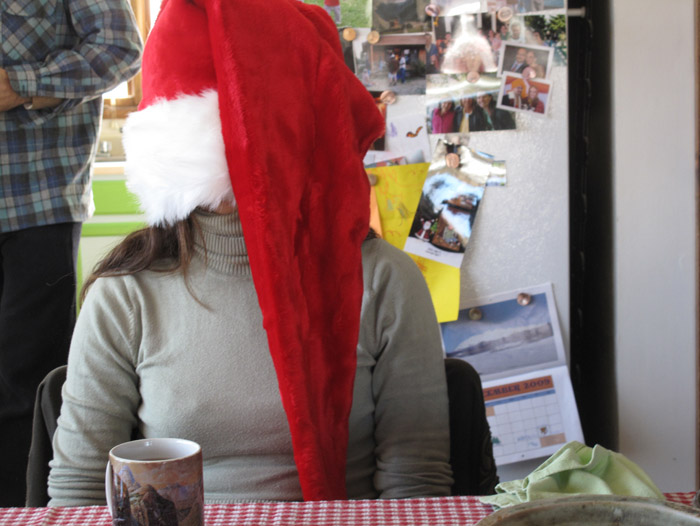
A New Art Form
I’d never been a fan of Stanley Kubrick. I considered him to be overrated. He was a middlebrow director who made pretentious melodramas, and I’d only ever seen maybe three of them. I’d seen The Shining, the one about Vietnam, and 2001: A Space Odyssey. In fact, that last one didn’t even count because I’d never managed to stay awake all the way to the end of it. I always fell asleep around the time the waitress walked on the ceiling, or else I’d pass out when the scientist stopped outside the lavatory to read instructions on how to use a zero gravity toilet.
I had no idea what it was that Kubrick wanted from me. Asking me to write a new space or new form into being was not merely absurd, but sadistic. It was graduate-school talk; not what I expected from an American legend like Kubrick. So I ignored it.
I’d rewrite the script instead of rethinking it. I’d change the plot around, rearrange the characters.
In my new version it was MacCauliffe’s son who had the drinking problem, and then it was MacCauliffe’s son’s male lover who drank, but each draft was worse than the last, and after two weeks of rewrites I decided to do it his way
If Stanley Kubrick wanted me to create a new kind of cinema, a new sort of movie, then my first step was to figure out what kind of movies he was already making. Skimming the biographies I found that he was most famous for his perfectionism. Kubrick spent years searching for a camera lens that would allow him to shoot Barry Lyndon using nothing but natural and candle light. I read that the street sets Kubrick built for Eyes Wide Shut were tremendously detailed and expensive, almost hyperreal. Kubrick’s New York City streets were more detailed than real streets.
I watched all of his films. Clockwork Orange disturbed me, but only in the way that it was meant to disturb everyone. On the other hand, while I recognized that Doctor Strangelove was a comedy, it disturbed me in ways that were perhaps unintentional. It struck me that Kubrick had done something terrible to George C. Scott, and that something inside of Peter Sellers was broken, and I had almost worked out a way to break something in myself, but before I could figure it out, Kubrick’s sound stages were destroyed.
Nineteen hijackers managed to get past security at Boston’s Logan International, Dulles International, and Newark, on September 11th. And that morning I was woken early, around 6:20 am Eastern, by my cell phone. The device gyrated on my glass bedside table and made a clattering noise.
“Church Street Books,” I said.
“They fucked us.”
“Mr. Kubrick?”
“It’s over. You can keep the retainer, of course,” Kubrick said.
“Okay,” I said. I glanced at the LCD screen on my cell phone to check the time, but somehow I’d turned on Tetris. An L-shaped block was falling.
While I listened to Stanley Kubrick swear at me from what I imagined was a phone booth in Times Square (Could I hear the buzz of neon lights over the traffic?), Mohammed Atta was taking a little yellow pill and staring out of the passenger side window of a BMW. Atta had had too much to drink at the Pink Pony, a strip club in Daytona, the night before. He reportedly was severely hung over, but I didn’t know any of that at the time.
“Did you say that you don’t want me to finish the rewrite? Am I fired?”
“The project is cancelled,” Kubrick said. “They went the other way. Apparently the moon was just a contingency plan,” Kubrick said.
Donnie rolled away from me on the futon, leaving a damp spot on my pillow. I looked at him. Donnie hadn’t landed an editing gig for almost a year, and yet he always slept like a baby.
“Would you at least look at what I came up with? Maybe you could use it for another project?” I asked.
“Use what?” Kubrick asked.
The genre. I’d written the script from multiple points of view, but the effect was a single voice that could be acted out in space by multiple players.
“Shit,” Kubrick said.
“You want me to email it to you?”
“No. Don’t email me anything. I don’t want to see it. Burn it. Burn everything.”
“What time is it?” I asked
“Don’t go into work today, Paula. Take a sick day,” Kubrick said.
“Am I fired?”
But Kubrick didn’t answer. Instead he hung up the phone, and I listened to the dial tone. I waited for the buzz in my ear to offer some kind of answer about what was going on.
I closed my eyes and lay back down, still half asleep, even, with my cheek on a pillow wet with Donnie’s saliva.
Hypnagogic, I imagined sending an email to the sun. I imagined pressing Send and watching the code flying through space. I watched the ones and zeros burn as they touched the edge where the sun was hot. I imagined the sun as a golf ball, and thought about Buzz Aldrin getting drunk on the lunar surface. I imagined that Buzz was sweating.
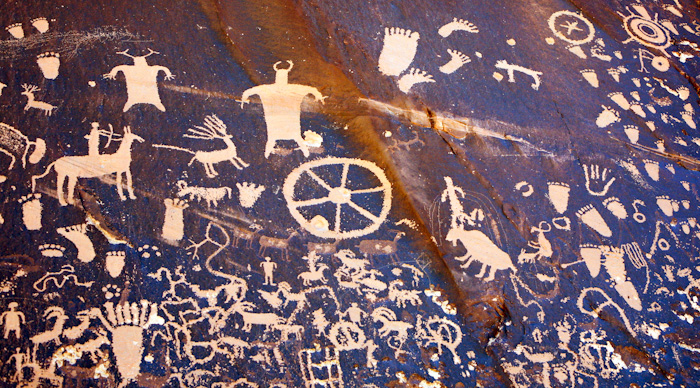
After September 11th
For the first two weeks, the streets around Church and Murray were impassable, but even after Church Street was cleared of the debris—the broken filing cabinets, personal computers, and pulverized concrete—almost no customers visited the Church Street bookstore. Only the cork message board in the back of the store, next to the wire racks of the Village Voice, was getting us any foot traffic. The bulletin board was covered over with snapshots of the dead: photocopies of Polaroids, yearbook pictures, school photos, images scanned from drivers licenses, and so on. Accompanying the photographs here were hand-written questions like “Have you seen our Johnny?,” and demands like “Call this number if you see this girl!” accompanying the photographs.
Everyone wanted to believe that some of the people in the photographs might just be lost. They were dazed and confused and wandering the streets, but otherwise unscathed. I looked at the faces, the smiling dead men, women, and children. Most of them, their bodies, would never be recovered. I wondered how long it would take their families to give up looking.
For the first few days after the bookstore reopened, the space by the bulletin board was taken over by a stream of people who otherwise did not fit the usual demographic mix. There were older people and fat people in the store. There were black, yellow, brown and red people.
But by the third day the demographics sorted themselves out, and the photographs that went up on the bulletin board were more glamorous. Our usual customers were students from the New School, or from NYU. Artists stopped in with illuminated color photographs. A dead woman looked at herself in a hotel bathroom mirror, and a handsome young man in his clean white suit stood in contrast to the spectrum of red and brown in the wood wall behind him.
Very little was required of me. The bookstore owner, a Slovenian immigrant named Slavi, spent hours standing by the cracked display window, next to his first edition copy of The House at Pooh Corner, staring out at the empty street. After awhile he wiped his nose with his hand, looked at his fingers for evidence, and then turned to me and asked, “Do you think customers will only want to buy from Americans now?”
I shrugged at him and retreated into reading. I didn’t know the answer to his question, and he didn’t really want an answer in any case. He just wanted to enjoy repeating the question.
While we waited, I read a book about the Marx Brothers. I flipped through a coffee-table book entitled the Marx Brothers Scrapbook, and watched another mourning family open the front door and wander to the bulletin board.
I read my book:
“Why a duck?” Chico asked. “Why not a chicken?”
Groucho answered, “No, viaduct. You know, like a bridge over water?”
“Ah, I see.”
“Good.”
“One thing though.”
“Yes.”
“Why a duck?”
I almost didn’t recognize him at first, even though he was wearing the same exact blue suit he’d been in the first time. He smiled at me with the same mischievous grin, but when I spoke to him, he pretended not to hear me. Instead he strolled between the bookshelves and looked at cookbooks. Then he moved to literature. He took his time pulling trade paperbacks from the shelves and putting them back. He turned the corner and moved down another row, further away from the register. Finally he seemed to find what he was looking for and he approached me.
“Is this a first edition?” he asked.
I looked down at the book he’d selected—it was a beaten up paperback version of JD Salinger’s The Catcher in the Rye. I turned the book over and found that, far from being a first edition, it had been printed in 1997. A new copy of Catcher in the Rye would have cost 5.95, but this was used and priced at two dollars.
“No, that’s a first edition and I’d like to buy it.”
“I don’t understand.”
“What does a first edition of Catcher in the Rye list for? You have a blue book?”
Slavi kept a current edition of the Rare Book Price Guide in a drawer by the register, and it listed a first edition of Catcher in the Rye at 10,000 dollars. I read the price out to Kubrick.
Kubrick wrote the check, but handed me a five dollar bill. He turned to look out the plate glass windows at the front of the shop, but had to lean to the left in order to see past the owner. I put his book into a plastic bag for him.
“They made a mistake,” he said. “But I won’t make the same mistake they did. You’re a talented writer, Paula. You should continue in that direction. Don’t get sidetracked by this. Just take this money, and then you and we will be good and you’ll be free of this whole nasty business.”
“What nasty business is that?”
Stanley Kubrick smiled at me. I’d asked the wrong question and made him angry, and his smile was the best, maybe the only, way he knew to express that fact to me. It was a smile that indicated that a certain kind of violence was being suppressed.
“Take the money, Paula. And then maybe take the time to write another novel.”
“What was the mistake that they made, and why does their mistake mean that you should pay me $10,000?” I asked.
“Did you delete the manuscript you wrote for me?” Kubrick asked.
I smiled at him this time, leaned across the counter, and then reached out and took the check out of his hand. I waved the check in his face. It was a dramatic gesture, like something out of a movie.
“What does this bribe mean, Stan?”
“Write your novel, and send it to an agent. I’ll write her name down for you.”
Stanley Kubrick wrote the name “Nicole Aragi” on page one of the Catcher in the Rye, put the book back in its plastic bag, and then handed the bag over to me.
“How did you know ahead of time?”
“Careful what you ask me, Paula,” Kubrick said.
“Did the attacks have anything to do with what we were doing? Were the attacks a way of making a new space?”
Kubrick stopped smiling. He grabbed his check out of my hands, tore it up into pieces, and then stuffed the pieces into his trouser pocket. He took the plastic bag from me, removed the Catcher in the Rye, and then walked back to the bookshelf where he’d found the book.
Stanley stood in the aisle for a moment, shrugged at me, and wiped his nose with his hand. He adjusted his beard with the palm of this same hand, pulling down on his chin, and then moved to the exit. He stepped around the owner, turned around one last time as if he had a parting thought, and then left. Kubrick stepped out the door and onto Church street, and by the time I got out from behind the register and across the store to the door to go after him, he’d disappeared down Vesey Street.
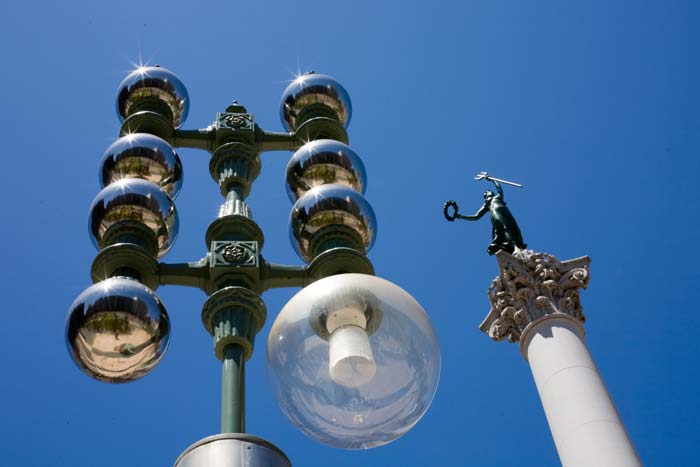
A Lime Green Convertible
When I spotted it rolling slowly down Broadway, my stomach clenched and I started shaking. It was probably a Ford Mustang convertible, definitely lime green, and I stopped outside of a Walgreens on the corner of Broadway and Warren, turned my back to the street, and stared at the display of Liquid Soaps and disinfectants behind glass. The anti-bacterial soap was the color of piss, and the bottles glowed in the October sun.
“Paula?” Nicholas Cage called my name from behind the passenger side window while Scarlett Johansen looked out the windshield and held the steering wheel with both hands. She blew a pink bubble with her sugar free gum.
Johansen was wearing a green sweater and a poodle skirt, and she had her hair up. Now, rather than looking like Molly Ringwald, she looked like Olivia Newton John. Nicholas Cage, on the other hand, looked only like himself, even though he was obviously dressed up like John Travolta. He was wearing a leather jacket and tight jeans, and he too wore his hair up, but in a pompadour.
“You remaking Grease?”
“Mister Kubrick asked us to talk to you.”
“What about?”
“Get in,” Cage suggested.
“I don’t think so.”
Nicholas Cage fumbled with the glove compartment, spilled the contents onto the rubber mat under his feet, and then pushed aside a Styrofoam cup, a car manual, what appeared to be ball bearings, and some Kleenex, until he found the pistol.
He rolled down the window with the crank, but unevenly at first. He had to roll the window back up and then roll it down again more slowly. When this was accomplished he pointed the gun out the window at me.
“Fuck, Paula. I mean, fuck!”
“What are you doing?” I asked.
“What does it look like I’m doing?” he asked. His voice was high pitched, and I realized that he was playing the scene for laughs. If the audience was laughing along with him, then his character would remain sympathetic even as he held me at gunpoint. “Get in the fucking car, Paula.”
I opened the backdoor and slid in to the middle of the bench seat. Cage turned around and looked exasperated.
“Where are we going?” I asked.
“Shut up,” he said.
“What do you want from me?”
“Just shut the fuck up, Paula!”
Cage produced a pillowcase with yellow sunflowers printed on it, from underneath the ball bearings on the floor. He pointed his gun at me—it was a grey and black pistol, not very large— and told me to freeze.
“Don’t struggle with me, or I’ll blow your fucking brains out,” he said.
Scarlett blew another bubble and then purposely popped it with her tongue. She chewed her gum aggressively. She was overdoing it, overacting.
Nicholas Cage put the pillowcase over my head, but I could still make out their outline of the front seats, still see their two heads in silhouette. They were kissing, necking, but awkwardly, and when Cage pulled away from Johansen, a line of gum stretched between their mouths.
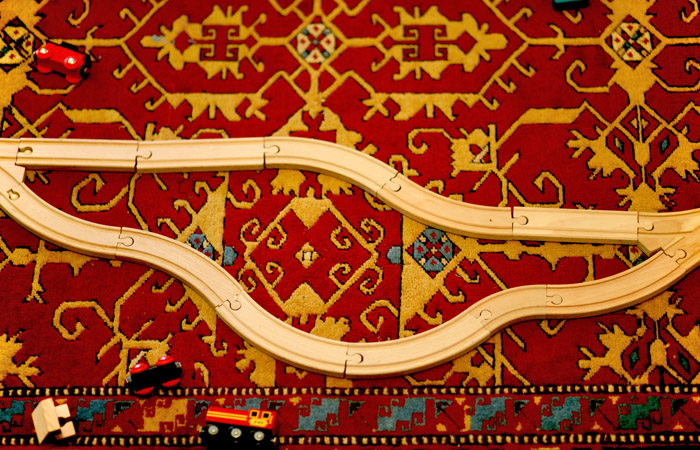
Starbucks
When they took the floral pillowcase off of my head, I found Nicholas Cage and Scarlett Johansen sitting across from me in overstuffed red chairs. They had changed out of their fifties style Greaser costumes and into corporate uniforms. Scarlett was wearing the green apron with the usual Starbucks mermaid logo, while cage wore Old Navy khakis, a button-down pink cotton shirt, and a Rolex watch.
The Starbucks didn’t have any windows that I could see, but the space was filled with enough artificial light that I had the impression that it was still daytime. The tables around us were empty, but I heard a murmuring of customers from around the corner and down stairs.
“Here’s your mocha,” Johansen said.
“I didn’t order any—” I started, but Nicholas Cage held up his finger to shush me. He wagged it back and forth at me.
“Don’t contradict Scarlett, Paula. She works very hard and puts up with shit all day, the last thing she needs is you changing your order,” he said.
“Look, you’re very good, but could you break character for a moment and tell me what’s going on?”
“Should I?” Cage asked. Scarlett sat down in one of the overstuffed chairs and took a sip out of the paper cup she’d just placed in front of me.
“Why not?”
“Okay, Paula. Okay, enough kidding around. You want information. You want to know what’s going on?”
Were they going to shoot me? If so why had they taken me to a Starbucks, to a public space?
“Oh, is Starbucks public?” Scarlett asked. “I thought it was private.”
“It’s a private corporation.”
The track lighting over my head intensified as the rest of the lights dimmed. The espresso machine stopped whirring, and I could hear the silence. Scarlett Johansen took the lid off of the coffee cup she’d been sipping from, and poured out glass marbles on the wooden table top between us.
“Those are from inside the boxes. Those are from the other side of the glass,” she told me.
“Cornell’s boxes?” I asked.
“Stanley wants you to tell us about him. About Cornell and his boxes,” Nicholas Cage said. “That’s what is going on, Paula. That’s all. He wants you to tell us about Joseph Cornell, and why you chose him.”
“Have you read my story?” I asked.
“Pretend that we haven’t,” Cage said.
“And then you’ll let me go?”
“You’ll be free to go anywhere you want.”
The Broken Assemblage
The Broken Assemblage was my story about how the artist Joseph Cornell went about the process of dying in his little room, and how his sister Betty Ann coped with his demise. Her brother had been a Christian Scientist, he hadn’t really believed in the outside world, and he’d left no real instructions for how to handle the affair of his death. Most of all he’d never indicated just what it was that he wanted her to do with his artworks, or more specifically his films.
She imagined calling Peggy Guggenheim, the millionaire heiress, but Betty didn’t really want to talk to anyone who wore sunglasses shaped like television sets while posing for photographs with her toy spaniels, and while there were other collectors who might be interested, Betty couldn’t remember any of their names.
The Broken Assemblage was about Mary Baker Eddy, the founder of the Church of Christian Science, who believed that the universe was really God’s mind, and that since God was perfect and good, it only followed that sin was unreal. Betty’s brother had tried to live out his relationship to God, to fill up on the righteous thoughts of Jesus, through his art, but even he had never fully succeeded. All Betty had to do, in order to realize how far from pure Joseph had been, was to read all the women’s names in his art, to look at their photographs.
Rose Hobart, for instance, was an actress from the thirties, and her name was also the title of Joseph’s first short film. All he’d done was rearrange the sequences of an old B movie and replace the soundtrack with music from one of his favorite Samba records. Her brother had edited the images of Rose Hobart to make it appear that the starlet was staring at stars reflected in a pool of water. Rose Hobart looked at her own mirror image: she glanced over her shoulder at herself.
The Broken Assemblage was the story of Joseph Cornell eating store-bought jellyrolls and drinking cherry flavor Kool-Aid while working on his final film with Stan
Brakhage. Cornell wrote down equations made of words on scraps of paper. He wrote, “Collage=Reality,” and “metaphysics and purity.”
Stan Brakhage was the filmmaker whose movies were all out of focus because he purposively broke his glasses in order to get a more authentic view of the universe. Stan Brakhage and Betty’s brother were both children. They’d held onto something in childhood on purpose, and now that Joseph was dead, it was up to Betty to pick up all the broken pieces he’d left behind.
On the tiny screen in Joseph’s room, the fold-up slide projector screen where the projected images of Rose Hobart were flickering, the actress was talking to a swami, and Betty found that she couldn’t help but admire her brother’s taste. The woman was quite lovely, and he had done something quite strange with her image. Lifted out of the usual flow of the movies, these scenes had a reality to them. He’d captured something about movies, something about what it meant to look at a movie that you forgot when you got caught up in the plot, and it really was beautiful and strange to see it. To sit in his studio, to find a half eaten Hershey’s chocolate bar on his nightstand, to watch his fantasies, it was as if he was still alive, or more like he was beyond life. There was something permanent about what was on the screen. Real life could never duplicate the quality.
My story “The Broken Assemblage” was a fantasy story, a strange tale about how Betty’s own desires came into the world when she broke the glass on one of her brother’s boxes. In the story, I intimated that she broke the Soap Bubble assemblage precisely because she came to understand that reality and desire are all mixed together. After watching her brother’s film, she knew that his art was a way to keep reality, desire, and all the seductive images of the world at a safe distance. Betty wanted her desire to be in the world, so she broke the pane of glass on the box and let the ideas out into the air.
What I told Nicholas Cage and Scarlett Johansen was that, in the story, Betty’s desires seemed less real to her after they’d been let out of the box. That she had broken open an assemblage entitled “Bebe Marie” and let the little girl doll inside the box free. She’d broken the frame, and then she found that the structures of her own life, all the little distances that had held her identity together, fell apart.
Betty’s husband died shortly after Joseph’s death, and her next-door neighbor’s house burned down, which led to a series of misfortunes that shortly required Betty to move.
Betty ended up living in a state-assisted nursing home. Only a decade after her brother’s death, she no longer knew her own name or how old she was, but was more and more convinced, every day, that she was a little girl. She was more and more convinced that she was lost in the woods, just like the girl in her brother’s assemblage box had appeared to be.
I told Nicholas Cage and Scarlett Johansen that breaking the old frames wasn’t a real option, but they didn’t believe me. And when I insisted that finding a new space, a new form, had not involved seeking unmediated reality, when I insisted that I had given up on getting beyond the frame – well, they didn’t seem to believe that either.
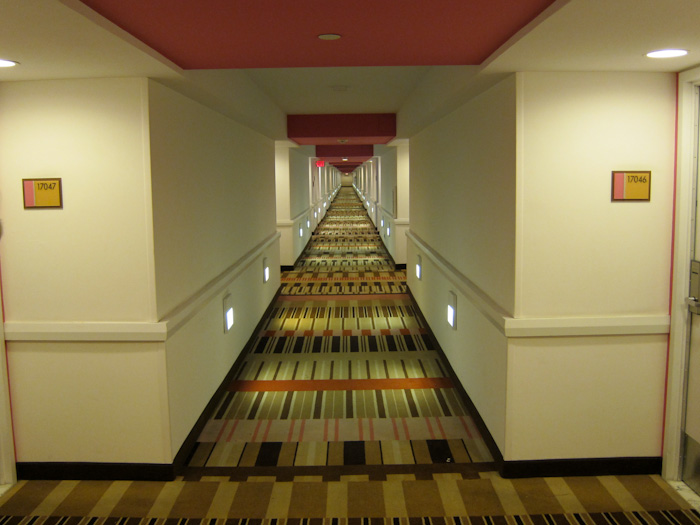
No Exit
I’m walking on the moon with Donnie, he’s dressed in blue jeans and a black, turtleneck, long-sleeved shirt, while I’m fogging up the glass visor in my space helmet with each breath. I’m following him as he follows the wooden tracks around the lunar surface, then behind matte paintings, and then to the giant globe. Donnie is trying to work out exactly where we are and I keep telling him that we’re in the basement of the World Trade Center.
“That’s impossible,” he says.
If we’re not in the basement of the World Trade Center, then we’re near the Fra Mauro crater. I try to explain it to him, but Donnie can’t hear me through the safety glass on my space helmet. He stands on the tracks, and then steps into the space between the tracks, into one of Joseph Cornell’s dream boxes.
When Nicholas Cage and Scarlet Johansen left us down here, they made sure to show me how all the dream boxes were already broken. The glass windows on each surreal display were cracked, shattered, or missing. And so there was nothing separating the necessary reality of Joseph Cornell’s Christian mind from the contingent unreality of the stage set for us by Stanley Kubrick. Nicholas Cage and Scarlett Johansen told me that my new kind of writing was what gave me this chance to live directly. They themselves were just actors, always pretending, but since I’d be living on the moon, I’d get the chance to be real. I would be really real.
Donnie reaches out toward the moon and points to a crater several hundred miles north of our position. I bounce slowly down the track and try to tell him that he’s pointing in the wrong direction, but as I said before, he can’t hear me.
The space suit I’m wearing is heavy, but not as heavy as the real suits the astronauts wore. The original spacesuits weighed about 200 pounds on the moon and were made out of the twenty-five layers of plastic, fiberglass, and metal. My suit is skin tight, except for the fishbowl-style helmet and the white backpack I’m carrying. And Donnie is only protected from the vacuum of space by his black turtleneck shirt and blue jeans.
Back on the lunar surface I detach a high tech scoop from the side of the lunar model and dig into the lunar sand absently. I keep digging until I hit the concrete floor.
“Where are we?” Donnie asks.
But he’s asking the wrong question. The question isn’t where are we, but who are we? Who are we that we could have ended up trapped so far down underground, all the way down here on the moon.
“You said there was an elevator?” Donnie said.
Donnie reaches out for me. He puts his hand on my space helmet and leaves a palm print there. He is so sure of himself with his hipster glasses and five o’clock shadow. He’s accustomed to selecting between images, and I see him looking at me, at the reflection of the moon’s surface on the glass bowl I’m wearing, and he’s beginning to realize that he doesn’t have a choice anymore. This image is real.
“Shit, Paula,” he says. “Where the fuck are we?”
The Last Apollo Mission is underway, there is no such thing as up, but I don’t have the heart to tell him. Instead I tell him there might be light out there, a green light for an emergency exit. I mouth the words to him so that he can read my lips. I look at Donnie from inside my glass helmet, and for a moment it almost seems as though he’s understood.
“Where are we?” He asks it again, and again. And we circle around again, down the wood tracks, over the dream boxes, and then back. All the way back to the moon.
About the Author
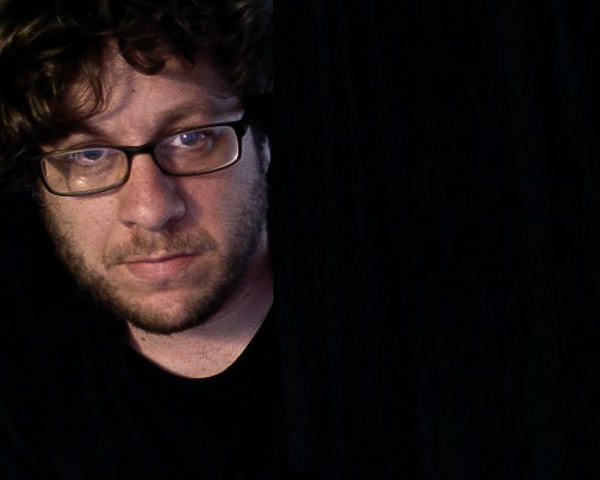
Douglas Lain’s work has appeared in literary and genre magazines since 1999. His first short story collection, Last Week’s Apocalypse, was published by Night Shade Books in 2006.
Lain’s Pick Your Battle , a quasi-memoir/surrealist self-help book, will be published in 2011, with the help of Kickstarter funding, and a second short-story collection, The Fall Into Time, will be published by Eraserhead Press. His first novel, Billy Moon: 1968, is due out from Tor Books in 2012. It tells the story of Christopher Robin Milne’s fictional involvement with the French general strike of May, 1968.
Doug is also the host of the weekly philosophy podcast Diet Soap. Recent subjects covered include Henri Lefebvre’s concept of the Production of Space, Theodor Adorno’s concept of the Ideological State Apparatus, and Charlie Sheen’s concept of Tiger’s Blood.
Post a comment on this story!